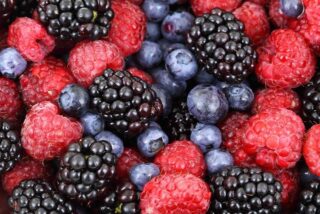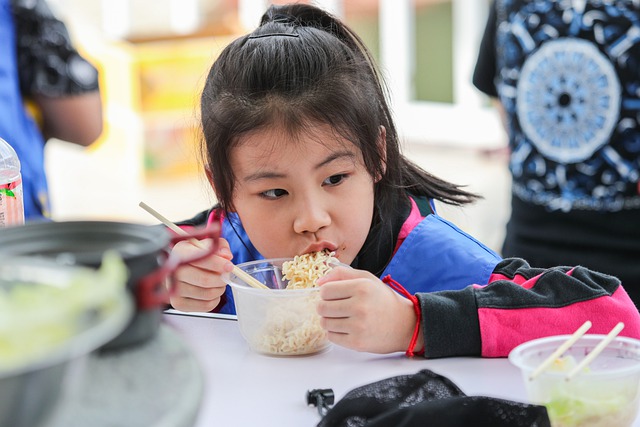Eating healthy can be expensive. But it doesn’t have to be. With a little bit of planning and creativity, you can eat healthy without breaking the bank. Here are 10 tips to help you do just that!
1. Buy in Bulk
Buying in bulk (like at Costco or Sam’s Club) is a great way to save money on items like nuts, seeds, grains, and dried fruit. These items are often much cheaper when purchased in larger quantities than they would be if purchased from the regular grocery store. Just make sure that you’re only buying what you need so nothing goes to waste!

2. Shop Seasonally
Shopping for foods that are in season is not only more cost effective but it also ensures that your food is fresher and more nutrient dense. Shopping seasonally will also help you discover new fruits and vegetables that you may not have otherwise tried!

3. Grow Your Own Produce
Growing your own produce is a great way to save money while getting some exercise and enjoying the outdoors! Homegrown fruits and vegetables also tend to be much more flavorful than store bought produce so there’s a tasty bonus too!

4. Eat Meatless Meals
Eating vegetarian meals every now and then is an easy way to save money on groceries since meat tends to be one of the most expensive items on your grocery list. There are plenty of delicious plant-based recipes out there so you won’t get bored with your meals either! PlantUniversity.ca is a great site that will send you a meatless recipe once per week for free, check it out!

5. Meal Prep
Meal prepping saves time (and therefore money!) because it eliminates the need for last minute takeout or delivery orders when you don’t feel like cooking after a long day at work. Meal prepping also helps keep portion sizes under control which can help keep your grocery costs down as well!
6. Buy Frozen Fruits & Veggies
Frozen fruits and veggies are typically cheaper than their fresh counterparts but just as nutritious (or even more so!). Not only that but frozen fruits and veggies tend to stay fresh longer than their fresh counterparts so they won’t go bad before you get around to using them either!
7. Look for Deals & Coupons
Always look for deals or coupons when shopping for groceries as this can help lower your overall costs significantly over time. Additionally, many stores offer loyalty programs which allow customers to earn points or discounts on future purchases so make sure to take advantage of those too if possible! Save.ca is a great resource for sales and coupons.
8. Stock Up When Items Are On Sale
Stock up on non-perishable items like canned beans or rice when they go on sale since these types of products typically have long shelf lives and will last awhile before needing to be replaced again (which means more savings!).
9. Don’t Waste Food
Wasting food should always be avoided as it harms the environment in multiple ways and leads to substantial financial losses. When shopping for groceries, taking the time to plan ahead is essential in avoiding unnecessary purchases and minimising food waste. Making lists ensures that nothing gets forgotten or left behind at the store, which can then lead to a decrease in wasted food.
To further preserve food at home, one should consider storing it properly in order to keep it fresh for longer. This could involve using airtight containers for items such as grains, pulses and nuts to prevent them from going stale. Additionally, keeping track of usage-by dates is important when considering what needs to be eaten first; this will enable you to make use of food items before they go off or spoil. Freezing foods that are not likely to get eaten soon can also help extend their shelf life so they can be used later on when needed.
Finally, reducing portion size is also an effective way of preserving food. If you’re cooking too much you can always freeze the excess for another day! Taking all these measures into consideration will ensure that both environmental and financial costs associated with food waste can be minimized; while making sure that your refrigerator (and bank account) remains well-stocked! Halfyourplate.ca has some great tips on storing food.
10. Try New Recipes
Trying new recipes every now and then helps keep mealtime interesting while saving money since trying new recipes sometimes requires less ingredients than sticking with tried-and-true dishes. Who know, you might discover something delicious along the way which could become part of your regular rotation of meals moving forward too!
Conclusion
Eating healthy doesn’t mean spending a fortune; it just takes some planning ahead and looking for creative ways to save money while still enjoying nutritious meals at home with family or friends. By following these 10 tips above, everyone can enjoy eating healthy without breaking the bank!
What is a healthy lunch for school kids?
You want your kids to have a healthy lunch, but you’re not sure what that looks like. You know they need protein, carbs, phytonutrients and fibre, but how much of each? And what are some good sources of each? Here’s a quick rundown of what a healthy lunch for school kids looks like.
Protein
Kid’s need about 5-6 ounces of protein per day. As a parent, it can be difficult to ensure that your child is getting enough protein in their diet. The good news is that there are plenty of great sources of protein available, including lean meats, tofu, beans, lentils, nuts and seeds.
However, one challenge parents may face is finding ways to work around common nut and seed allergies. If your child or a classmate is allergic to nuts or seeds, be sure to check with your naturopath or pediatrician for suggestions on alternate sources of protein. There are plenty of good options available, including lean meats, tofu, beans, lentils and plant-based protein powders.

Carbs
Carbs are the body’s main source of energy. Kids need about 3-5 ounces of carbs per day. Complex carbs are the body’s main source of energy. They are made up of long chains of sugar molecules that the body can slowly break down and use for energy. Simple carbs are made up of short chains of sugar molecules and the body can break them down quickly for energy. Good sources of complex carbs include fruits, vegetables and whole grains. Some examples of complex carbs that kids would enjoy include:
-Oatmeal
-Quinoa
-Brown rice
-Sweet potatoes
-Fruits like apples, bananas and berries
-Vegetables like broccoli, cauliflower and carrots
Phytonutrients
Phytonutrients are important for kids because they help protect against disease and promote good health. Phytonutrients include antioxidants, which are important for helping to protect the body from damage caused by harmful molecules called free radicals. Free radicals can damage cells, leading to diseases such as cancer. Antioxidants help to counteract the effects of free radicals, preventing or slowing down cell damage. Some good sources of phytonutrients for kids include fruits, vegetables, herbs and spices. Some examples of antioxidant rich foods that kids would enjoy include blueberries, raspberries, strawberries, blackberries, cherries, tomatoes, bell peppers, broccoli, kale and spinach. These foods are packed with nutrients that are good for kids’ growing bodies.

Fibre
Fibre is an important part of a healthy diet. It helps the body feel full and can help with weight loss and maintenance. Kids need about 25 grams of fibre per day. Fibre comes in two forms: soluble and insoluble. Soluble fibre dissolves in water and can help lower cholesterol and blood sugar levels. Good sources of soluble fibre include oats, legumes, apples and berries. Insoluble fibre does not dissolve in water and helps with bowel regularity. Good sources of insoluble fibre include whole grains, vegetables and fruits with skins.
Conclusion
A healthy lunch for school kids should include a variety of protein, carbohydrate and fiber-rich foods to ensure that they are getting the nutrients they need to stay energized and focused throughout the day. While nuts and seeds are healthy sources of protein, fat and fiber, there are other healthy alternatives for those whose schools do not allow them. Parents should always consult with their pediatric naturopath, pediatrician or dietician to create a healthy lunch plan that meets their child’s specific needs.






